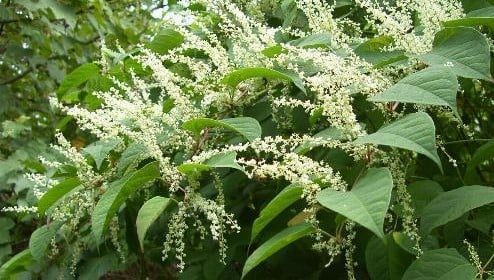
Japanese knotweed is an infamous plant that can wreak havoc for many homeowners. It is an herbaceous perennial meaning that it dies down to ground level each winter and re-emerges in the Spring, it lasts for an indefinite number of years.
Japanese knotweed is known for causing damage to building structures and substructures by targeting weak points, such as cracks in masonry, and attempting to grow through them. Due to its rapacious growth particularly during the summer months the plant should be raised as an issue within your building and pre acquisition surveys and may be costly to remove so should not be dismissed lightly. Further to this the sighting of this plant can endanger your hopes of buying or selling a home. At the very least, the provider will demand a professional eradication plan that could cost thousands of pounds, with experts forced to provide a lengthy guarantee against the knotweed’s return before a mortgage offer is made.
Japanese knotweed can be recognised for its lime-green bamboo-like stem, speckled purple and red. The leaves are heart-shaped – with sprouts having a reddish tinge and turning a lime green. In the summer, they produce clusters of creamy-white flowers.
Knotweed costs the UK economy £166 million per year for treatment and in property devaluations.
The means of eradication are numerous and each situation will have its own “best” solution in essence however if you suspect this plant might blight your property, speak to an expert, act quickly and don’t ignore its presence.
